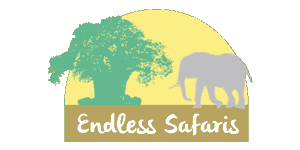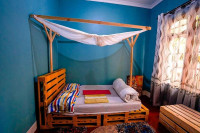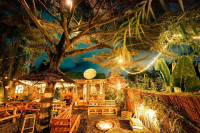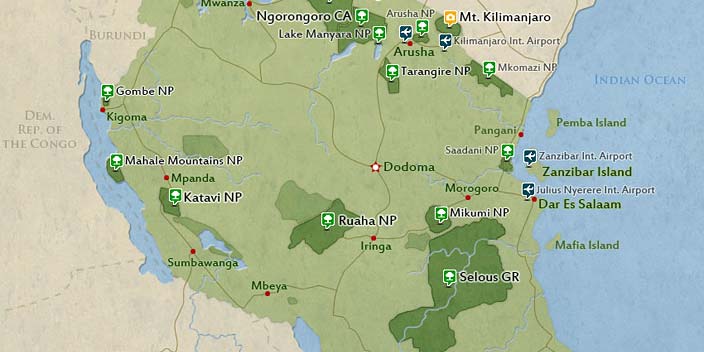
$1,815 pp (USD)
2 travelers on Start dateArrival
Arrival

Day 1
Arrival in Arusha to your Hostel
Arrival in Arusha to your Hostel
First, our professional guide will pick you up at the Airport to your hostel by 4×4 wheel drive to the hotel. During the drive to your hotel, you will experience the difference between the natural smell of Tanzania. You will drive straight to your accommodation at Banana Farm Eco Hostel.
- Main Destination:
- Arusha (City)
- Accommodation:
- Banana Farm Eco Hostel
- Meals & Drinks:

Day 2
Hostel to Arusha National Park
Hostel to Arusha National Park
Following a delicious breakfast at your hostel, you will have the opportunity to prepare for the day ahead. You will then enjoy a delicious and appetising lunchbox.
Arusha National Park is a fantastic place that many tourists don't know about. It's home to a huge variety of habitats, including swamps, open plains, mountain forests, and volcanoes, all within a short distance of Arusha city. Arusha National Park is the only place on the northern safari circuit where you can see the incredible acrobatic black-and-white colobus monkey! Amidst the forest stands the spectacular Ngurdoto Crater, whose steep, rocky cliffs enclose a wide, marshy floor dotted with herds of buffalo and warthog.
The distance from central Arusha to Tanzania’s Northern circuit park is only 45 minutes. At just over 212 square miles (542 sq. km), its located between the peaks of Kilimanjaro and Meru mountain.
3 main areas:
1. Ngurudoto Crater (surrounded by forest)
2. The Momela Lakes (alkaline)
3. Mount Meru.
- Main Destination:
- Arusha National Park
- Accommodation:
- Budget camping
- Meals & Drinks:

Day 3
Arusha National Park to Tarangire National Park
Arusha National Park to Tarangire National Park
Following breakfast at the campsite outside Tarangire National Park, you will have the opportunity to prepare for the day ahead at Tarangire National Park. The lunchbox will then be served, which includes various appetising and tasty foods.
Tarangire national park is best known for its baobab trees and its year-round elephant population. In brief, it is common to see herds of up to 300 elephants of all ages and sizes. But predators are also well represented, along with more than 550 different bird species, the most breeding species in any one habitat anywhere in the world.
In general, it is the largest concentration of wildlife outside the Serengeti ecosystem and the only place in Tanzania. The fringe-eared oryx and the long-necked gerenuk can be observed. For example, wildebeest, zebra and other thirsty nomads crowd the shrinking lagoons. While Lions wait early for the next opportunity to hunt.
The objective for today is to conclude the journey at the Twiga campsite in Mto wa Mbu.
- Main Destination:
- Tarangire National Park
- Accommodation:
- Budget camping
- Meals & Drinks:

Day 4
Tarangire to Lake Manyara National Park
Tarangire to Lake Manyara National Park
This campsite is conveniently located near Lake Manyara National Park, making it an ideal destination for a day trip. After breakfast, we will depart for Manyara.
Above all, Manyara National Park has most visible predators and prime tourist attraction are lions, famous for their habit of climbing trees.
Why the lions of Lake Manyara National Park? And not those of nearby Serengeti and Ngorongoro spend so much time in trees remains a mystery. The acacia woodlands south of the Msasa River provide an ideal spot for the Lions to retreat from the sun.
However, the only kind of their species in the world, not only they make the ancient mahogany and elegant acacias their home during the rainy season and are a well-known but also rare feature of the northern park. In addition, the lions, the national park, is also home to the largest concentration of baboons anywhere in the world — a fact that accounts for interesting game viewing of large families of primates.
- Main Destination:
- Lake Manyara National Park
- Accommodation:
- Budget camping
- Meals & Drinks:

Day 5
Lake Manyara to Serengeti National Park
Lake Manyara to Serengeti National Park
Your next destination is the Serengeti National Park, which you will reach after breakfast. Return to your camp for the evening fire, dinner and overnight stay.
Over 2 million migrating animals participate in this annual journey: 1.5 million wildebeest, 400,000 zebra, and 300,000 Gazelles accompanied by various goals: to find fresh, green grass. So the Great Migration takes place throughout the year. Prey and predator follow a relatively predictable but variable annual cycle dependent on rainfall and abundant green grass.
- Main Destination:
- Serengeti National Park
- Accommodation:
- Budget camping
- Meals & Drinks:

Day 6
Serengeti National Park to Ngorongoro Crater
Serengeti National Park to Ngorongoro Crater
After breakfast, you will depart for Ngorongoro Conversation Area for a game drive.
The Ngorongoro crater is known as the eighth wonder of the world!
The big five animals —lion, leopard, elephant, black rhinoceros, and African buffalo—are indeed enormous.
In Ngorongoro crater, National Park, it’s possible to see all the big five.
The Ngorongoro Conservation Area (NCA), measuring 8,300 square kilometres, is the only place on earth where humankind and wild animals co-exist in harmony. Above all, the Ngorongoro crater sinks to a depth of 610 meters, with a base area covering 260 square kilometres. Thereby, the height of the original volcano must have ranged between 4,500 to 5,800 meters high.
There are so many scenes of unimaginable abundance. For instance, wildebeest, zebra buffalo, and Grant’s gazelle, warthog, hartebeest, bushbuck, waterbuck, and reedbuck.
- Main Destination:
- Ngorongoro Crater
- Accommodation:
- Budget camping
- Meals & Drinks:

Day 7
Ngorongoro Crater to Arusha
Ngorongoro Crater to Arusha
After breakfast at your campsite, we'll head out the road to Arusha. On the way to Arusha, you'll get to see the local street life of Tanzanian people. You never know, it might be a market day on the way back to Arusha. Why not have a look!
- Main Destination:
- Arusha (City)
- Accommodation:
- No accommodation (End of tour)
- Meals & Drinks:





















